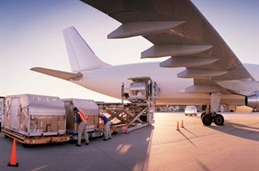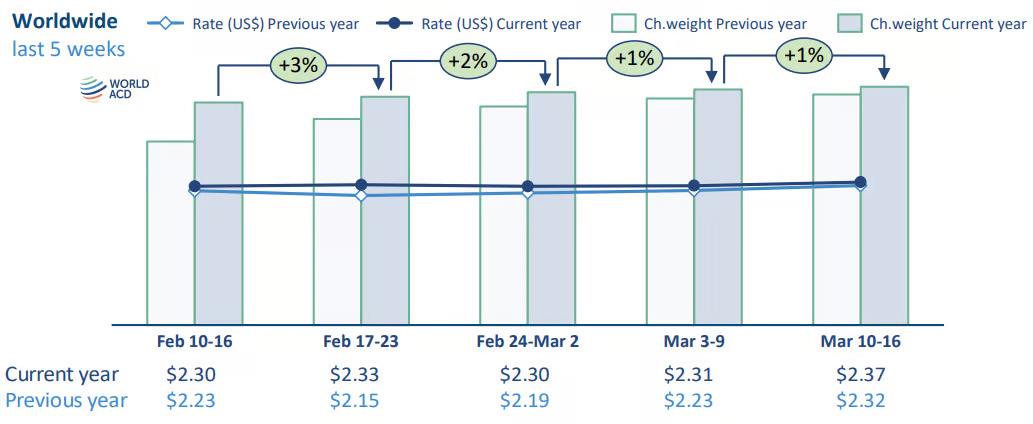
Global air cargo rates and demand continued their modest upward trajectory during the second full week of March, according to data from WorldACD Market Data, with the Middle East & South Asia (MESA) being the only major origin region to report a decline.
For week 11 (March 10–16), worldwide tonnages rose 1% compared to the previous week and were 3% higher year-over-year. Central & South America (+4%) and Asia Pacific (+3%) drove this growth as markets rebounded from the post-Lunar New Year slump.
In contrast, MESA tonnages fell 4%, attributed partly to business closures during India's Holi festival. However, when averaged across the past two weeks, MESA tonnages remained stable, with notable gains to Asia Pacific (+9%) offsetting declines to Europe (-3%).

[Source: WorldACD]
Asia Pacific rebound
Asia Pacific tonnages rebounded strongly in weeks 10 and 11, recording increases to Europe (+13%) and North America (+10%). On a week-over-week (WoW) basis, Asia Pacific-to-Europe volumes rose 7% in week 11, marking the highest level this year.
Growth was reported across major markets, including China (+7%), South Korea (+18%), and Taiwan (+13%).
WorldACD said Asia Pacific-to-U.S. tonnages also gained 5% in week 11, continuing five consecutive weeks of growth. South Korea (+13%) and China (+6%) led the rebound after earlier declines.
In terms of pricing, the air cargo market data provider said average spot rates from Asia Pacific to Europe remained steady at US$3.92 per kilogram in week 11, with China-to-Europe rates dipping 2% to US$3.87.
Rates on this route were up 16% year over year, with increases noted from China (+8%) and Japan (+18%).
Asia Pacific-to-U.S. rates were relatively flat at US$4.91 per kilogram but remained 11% higher year-over-year.
The report noted significant pricing variations, including increases from China and South Korea (+15% each) to the U.S. and declines from Japan (-8%) and Vietnam (-11%).
Average worldwide rates of US$2.37 per kilo, based on a mix of spot prices and contract rates, rose 3%, WoW, in week 11, taking them 2% above their equivalent level this time last year.



